In the DIY world, a circular saw is a versatile and indispensable tool that can slice through wood with precision and finesse. But have you ever wondered about the importance of accurately measuring your circular saw blade? Well, wonder no more! This definitive guide will unravel the mystery behind measuring this essential component of your saw, ensuring your cuts are as accurate as the North Star. So, fasten your toolbelts and let’s dive into the wonderful world of circular saw blade measurements.
Why Does Selecting the Right Blade Matter?
When choosing a circular saw blade, there are two primary things to consider when selecting the right blade: its size and shape. The size of the blade refers to its diameter, thickness and number of teeth. The shape is determined by the angle at which the teeth are cut or how the teeth are arranged on the cutting edge. It is important to select the right combination of these qualities to maximize the performance of your saw.
Finally, when selecting the right circular saw blade for your project, it’s important to measure the depth of cut that you need to achieve. This can help determine which type of blade will provide the best results for your specific project. Different saw blades are designed to accommodate various depths of cut, so you’ll need to measure the depth and then select a blade that can handle that particular dimension [1].
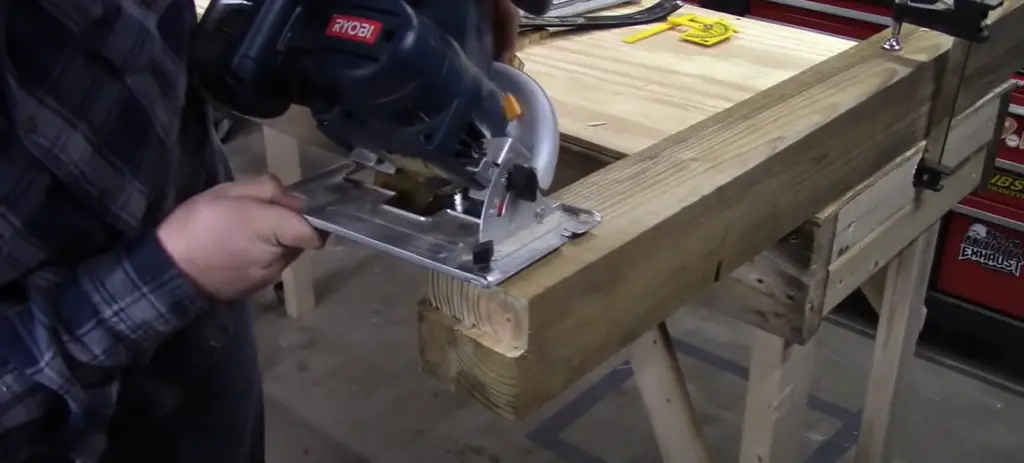
Circular Saw Blade Anatomy & Construction
Using a circular saw to make precise cuts requires familiarity with the various parts and construction of the blade. The anatomy of a circular saw blade is relatively simple, but it’s important to understand each component so that you can identify potential problems and correctly choose the right blade for your project.
The most basic components include:
- Rim: This is the part of the blade that’s visible when looking at it from the side. It’s usually made of steel and it serves as a guide for cutting.
- Teeth: These are located on the outside edge of the rim and they provide a cutting action when in use. The number and configuration of teeth can vary depending on the type of blade.
- Core: This is the innermost part of the saw blade and it’s usually made from heavy-duty steel for added durability. It serves as a support structure for the rim and teeth and helps to keep the blade level while cutting.
The number of teeth, the shape of the teeth, and the size of the blade can all vary depending on the type of job or material you’re cutting. Generally speaking, blades with fewer teeth will provide a faster cut but they also produce more waste. Blades with more teeth will provide a slower but cleaner and more precise cut.
So, when selecting a circular saw blade for your project, it’s important to consider the type of material you’re cutting and the desired result. A blade with fewer teeth will work well for quick, rough cuts on softer materials like plywood while a blade with more teeth will yield better results when making intricate cuts on harder materials like metal. Additionally, if you’re looking for a smoother finish, make sure to select a blade with carbide-tipped teeth [2].
How to Select the Right Blade
Saw Blade Materials
When selecting the right blade for your circular saw, it is important to consider the material of the saw blade. Different materials are used for different applications and each has its own advantages and disadvantages.
Steel blades are the most commonly used type of saw blade. They are typically less expensive than other types and provide excellent cutting performance with a long lifespan. However, steel blades tend to dull quickly and may require frequent sharpening or replacement.
Carbide-tipped saw blades are more expensive than steel but offer better-cutting performance and a much longer lifespan. These blades can withstand high temperatures and handle tougher materials, making them ideal for professional use. They also keep their sharpness for longer periods without the need for frequent sharpening or replacement.
Diamond blades are the most expensive type of saw blade and are used for specialized cutting applications such as concrete and masonry. These blades can last up to 10 times longer than steel or carbide-tipped blades and provide an exceptionally smooth cut with minimal wear on the blade itself.
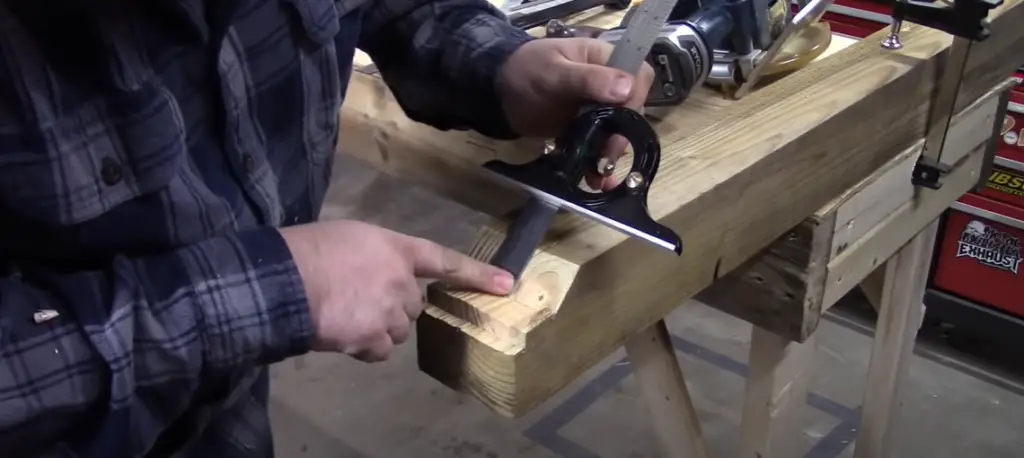
Saw Blade Sizes
The size of the saw blade is determined by the diameter, kerf, and number of teeth. The diameter is the overall width of the blade in inches while the kerf is the thickness or width of material removed by each cutting tooth. The number of teeth refers to how many teeth are on the saw blade which determines how fine or coarse a cut will be.
The size of the saw blade should match the material you are cutting as well as the power of your saw. A larger diameter and fewer teeth will provide a faster, rougher cut while a smaller diameter and more teeth will provide a slower, smoother finish. It is important to select the right blade for your application to get the best results. The most common blade sizes range from 4 to 12 inches in diameter and 4 to 24 teeth per inch.
Saw Blade Shapes
Saw blades come in different shapes to accommodate various applications. Some of the most common saw blade shapes are flat, chisel, hook, and combination tooth blades.
Flat blades are designed for general-purpose cutting with a straight cutting edge and no offset. Chisel blades are designed for plunge cuts with a curved cutting edge that allows the blade to cut more deeply into the material. Hook blades are designed for fast, aggressive cuts with an angled cutting edge that bites into the material quickly. Combination tooth blades have alternating teeth with different shapes and angles to provide a clean finish in hard materials like metal.
Tooth Geometry
The geometry of the teeth is also an important factor in selecting the right saw blade. The angle and shape of the teeth determine how quickly the material can be cut and how cleanly it will finish. Common tooth shapes include flat top, alternate top bevel (ATB), triple chip grind (TCG) and high-alternate top bevel (HATB).
Flat-top saw blades are designed for general-purpose cutting with a sharp edge that allows the blade to cut quickly and efficiently. ATB blades have angled teeth on both sides of the blade that provide clean cuts in wood materials while TCG blades have chamfered edges to reduce splintering in hard materials like metal. HATB blades are similar to ATB blades but have a wider bevel angle that provides smoother cuts in hardwood and plywood.
Hook Angle
The hook angle of a saw blade is a critical factor in its cutting performance. It refers to the angle formed between the cutting edge and the rest of the blade. This angle plays a vital role in determining how aggressively the blade will cut into the material. A higher hook angle results in faster cuts, making it ideal for tackling tougher materials. However, it may leave rougher finishes. On the other hand, a lower hook angle offers slower cuts but ensures cleaner and smoother finishes. Hook angles typically range from 0° to 20°, with the majority of saw blades falling within the 5° to 15° range. Careful consideration of the hook angle helps optimize cutting efficiency and ensures the desired finish for a wide range of cutting tasks.
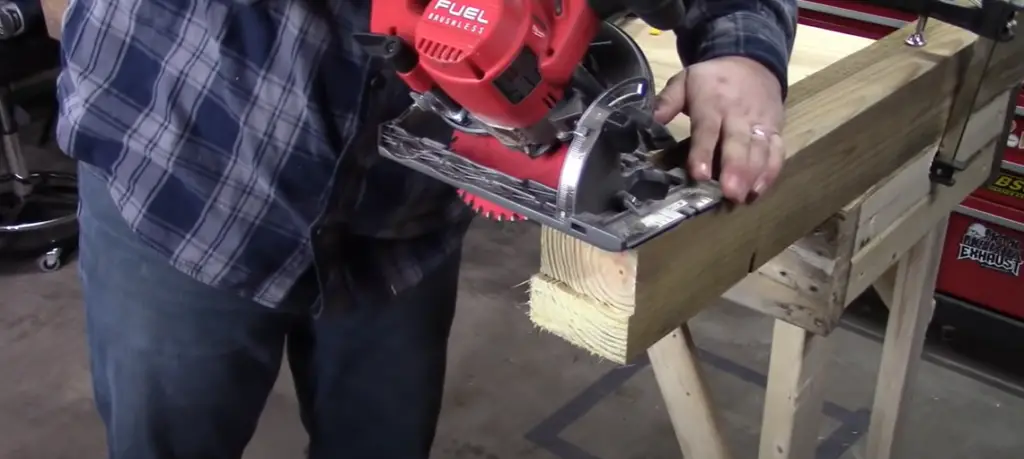
Expansion Slots
Expansion slots are strategically placed in the blade to reduce the amount of vibration that occurs during cutting. This helps improve accuracy and reduces the risk of kickback, ensuring a safer cutting experience.
The number and placement of expansion slots depend on the size and type of saw blade being used. Generally, larger blades require more expansion slots than smaller blades to reduce vibration. The slots are typically placed near the cutting edge to maximize their effectiveness.
By taking into account all of these factors, you can make an educated decision when selecting a saw blade for your circular saw. Doing so ensures that you get the best performance from your blade while minimizing wear and tear on your saw and material. With careful consideration and a bit of knowledge, you can make sure that your cutting jobs go as smoothly as possible [3].
Standard vs Premium Circular Saw Blades
When it comes to choosing between a standard or premium circular saw blade, there are several important factors to consider. While the price tag of each type may differ significantly, the performance and longevity of each will depend largely on how they are used and maintained.
For starters, standard blades tend to be made with lower-quality materials and offer fewer features than their premium counterparts. Generally speaking, these blades will need to be replaced more often and may not provide the cleanest cut. If you’re looking for a saw that is good enough for occasional use and light applications, then a standard blade may be adequate for your needs.
When it comes time to measure your circular saw blade size, be sure to measure both the diameter and the arbor size. The diameter is the overall width of the blade and should be checked to ensure it is compatible with your saw’s arbor. The arbor size, meanwhile, is the hole in the center of the blade that fits over the saw’s drive spindle. It is important to make sure you choose a blade that has an arbor size compatible with your saw model.
Circular saw blades: tooth type and design
Alternate top bevel teeth (ATB)
Alternate top bevel (ATB) teeth are the most commonly used type of tooth for circular saw blades. These blades feature alternating left and right-handed teeth and are designed to produce a smooth cut with minimal tear-out. ATB blades have a positive hook angle that helps them keep their cutting edge sharp during use. They can handle a wide range of materials, from soft woods to hard plastics.
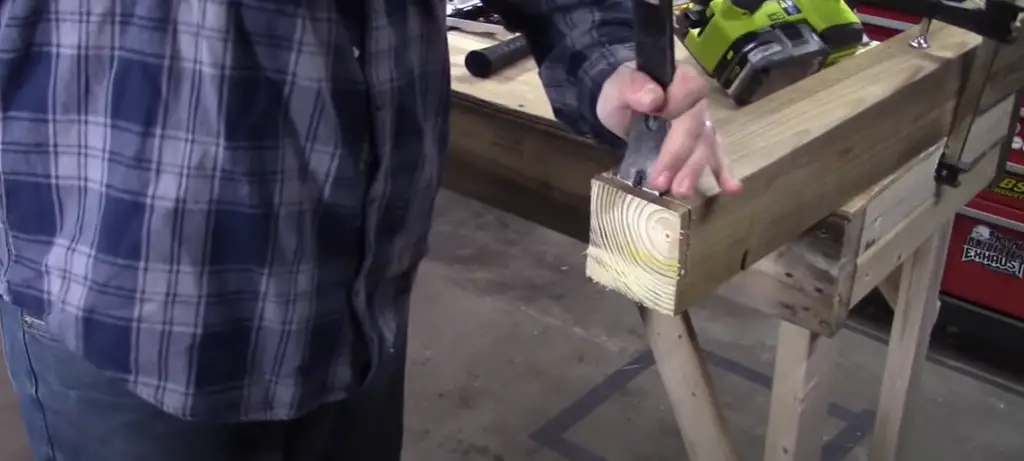
Triple chip grind (TCG)
Another popular tooth type is the triple chip grind (TCG). These blades feature three sets of teeth, each with a different angle and profile. The result is a blade that produces an especially clean cut in tough materials like laminated wood and aluminum. TCG blades have a slightly negative hook angle, making them less likely to suffer from excessive wear over time.
Flat top grind (FTG)
Flat top grind (FTG) teeth are used for non-through cuts in softer materials like plywood and paneling. The flat top profile of the blades helps reduce splintering when cutting. FTG blades have a very small hook angle, allowing them to cut through soft materials without leaving chipping or tearing-out.
Hollow ground teeth
Hollow ground teeth are usually found on specialty blades for cutting thin metal stock. The sharpened edges of the tooth profile help reduce friction while cutting, resulting in a smooth and precise cut. Hollow ground blades also have a negative hook angle, which helps prevent them from getting dull too quickly when used for metal cutting.
FAQ
How do I know what size blade my circular saw is?
There are a few methods you can use to determine the size of your circular saw blade. The first and simplest method is to check the label on the side of your saw’s motor housing, which should indicate the size of the blade that it is compatible with. If that doesn’t provide any helpful information, then try measuring the diameter of the arbor hole in the blade. This can be done using a ruler, or for more accuracy, you can use calipers. Be sure to measure from one side of the arbor hole to the other, rather than across the diameter. Once you have this measurement, you will know what size blades are compatible with your saw.
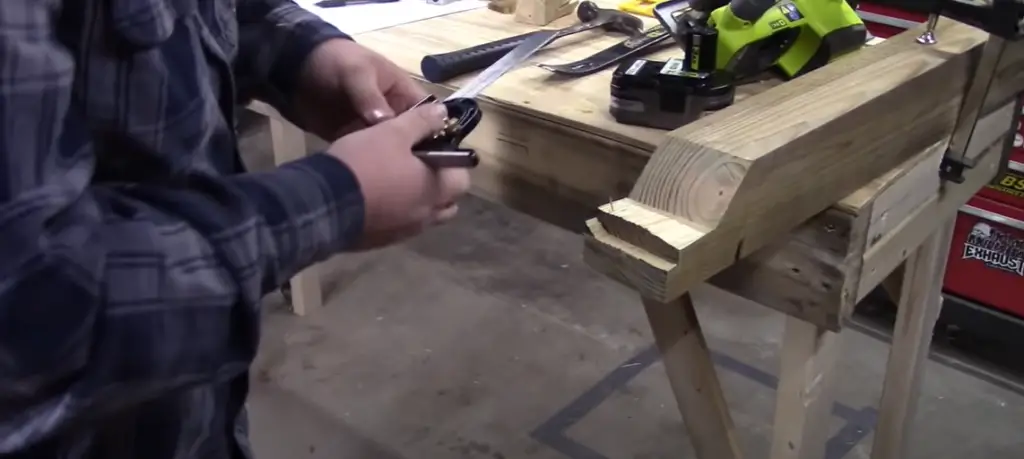
What do the numbers mean on a circular saw blade?
The numbers on the side of a circular saw blade indicate the diameter of its arbor hole. This is an important measurement when choosing a new blade for your saw, as blades that are too large or too small can cause damage to your tool. The number will typically be indicated in inches (or possibly centimeters), so make sure you check what unit of measurement it is given in before making your purchase. In addition to the arbor hole size, some blades will also include a number indicating the number of teeth on the blade, which can help you determine what type of cuts it is best suited for.
What types of cuts can I make with my circular saw?
The type of cuts that you can make with your circular saw will depend on the type and size of the blade that you are using. Generally speaking, larger blades will be better for making straight cuts in thicker materials, while smaller blades will be better suited for making more intricate cuts in thinner materials. In addition to the size of the blade, you should also take into account the number of teeth it has – blades with fewer teeth will be better for making rough cuts, while blades with more teeth will create smoother and cleaner edges.
Are saw blades measured by radius or diameter?
Saw blades are typically measured by diameter. The size of the arbor hole in a blade will be indicated in inches (or possibly centimeters), and this is what you should use when selecting a new blade for your saw. Be sure to check the unit of measurement on the side of your saw’s motor housing, as some tools may specify different units than others. Once you know the diameter of your saw blade, you can easily determine what size blades are compatible with your tool.
What is the difference between a standard and a combination circular saw blade?
The main difference between a standard and combination circular saw blade is that a combination blade typically has both flat-top teeth and alternate top bevel (ATB) teeth. This makes them better suited to making cuts in a variety of materials, as they can handle both rip and crosscut operations. The flat-top design helps make clean rip cuts along the grain of the material, while the ATB teeth are better at making crosscuts across the wood fibers.
In addition to being more versatile than standard blades, combination saw blades also tend to be more durable as they have a higher tooth count. This makes them better for making repeated cuts in hardwoods or other dense materials, and it also helps to reduce the amount of noise and vibration during operation. For these reasons, combination blades are often the preferred option for professionals looking to make precise cuts with minimal effort.
Useful Video: circular saw size
Conclusion
To measure a circular saw blade, you will need a few basic tools and accessories to ensure accuracy. Measuring the diameter of a circular saw blade is an important part of maintaining your power tool, and ensuring that it is performing at its best. With the right measurements in hand, you can use this information to select the correct replacement blades or make adjustments to your current saw as needed. Taking careful measurements and paying attention to details will help you avoid costly mistakes and keep your saw running optimally for years to come.
References:
- https://tameson.com/pages/hacksaw-blade-selection
- https://www.whitecap.com/circular-saw-blades-accessories/understanding-circular-saw-blades
- https://jettools.com/blog/how-to-choose-the-right-saw-blade















Leave a Reply